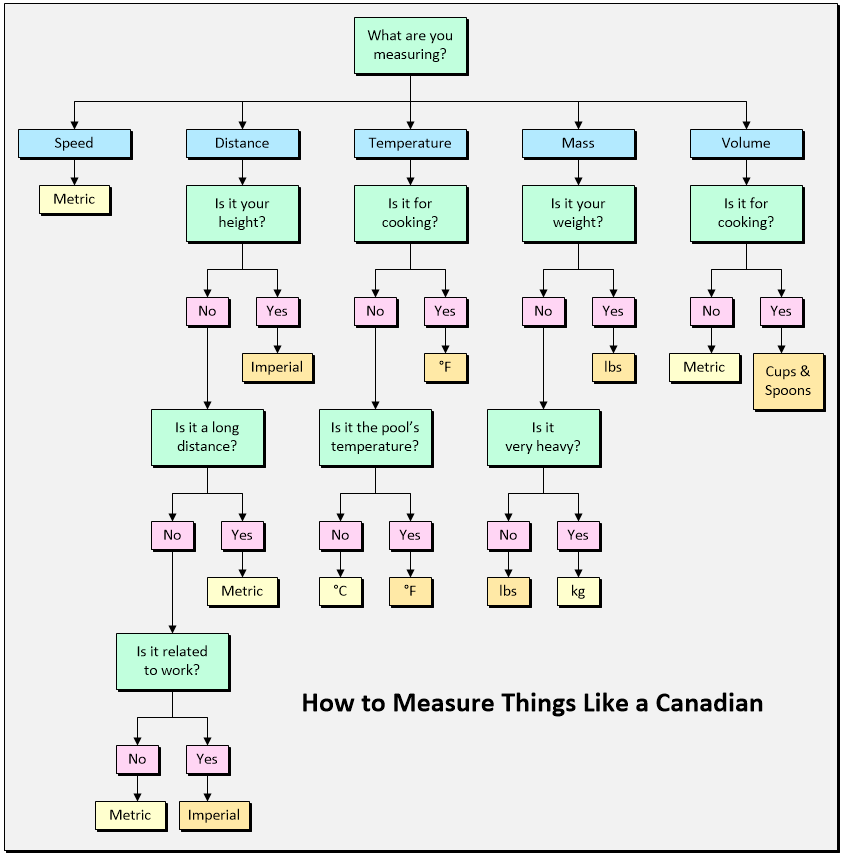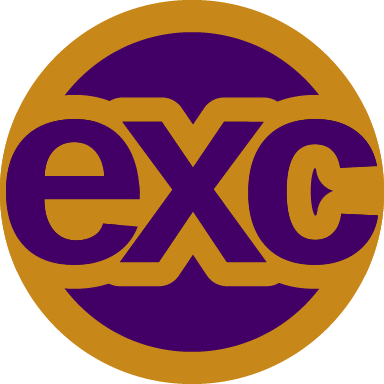Metric has been legally “preferred” in the US since 1975. We just don’t use it.
Also while I was looking up that year I came across this wild factoid:
In 1793, Thomas Jefferson requested artifacts from France that could be used to adopt the metric system in the United States, and Joseph Dombey was sent from France with a standard kilogram. Before reaching the United States, Dombey’s ship was blown off course by a storm and captured by pirates, and he died in captivity on Montserrat.
So
pitatespirates are why America uses freedom units.Damn those ruthless pitates!
Here I thought you made a typo…but no, you typed it exactly right :D
We measure in whales, giraffes, and hamburgers around here homie.
While we are at it, let’s all (as in the entire planet) switch to 24hour UTC and the YYYY.MM.DD date format.
Seconded.
What about a format where we only have multiples of 10?
You mean base-10? My totally unrealistic pipe dream would be to have the world switch to base-12.
I mean something like 1 day = 10 hours = 1 000 minutes = 100 000 seconds (currently 86 400 seconds so a second would only get slightly faster).
https://en.m.wikipedia.org/wiki/Decimal_time
This term is often used specifically to refer to the
French Republican calendartime system used in France from 1794 to 1800, during the French Revolution, which divided the day into 10 decimal hours, each decimal hour into 100 decimal minutes and each decimal minute into 100 decimal secondsOh, nice! It’s funny how it’s the same as the one I just made up which further proves that it simply makes sense.
ISO8601 gang
Represeeeeent!
Some ISO8601 formats are good, but some are unreadable (like 20240607T054831Z for date and time).
The ones without separators tend to be for server/client exchange though.
I agree but they’re hard to read at a glance when debugging and there’s lots of them :)
Having said that, a lot of client-server communications use Unix timestamps though, which are even harder to read at a glance.
I mean I like this one without the separations
YYYY.MM.DD and 24 hour for sure.
Everyone using UTC? Nah. Creates more problems than it solves (which are already solved, because you can just lookup what time it is elsewhere, and use calendars to automatically convert, etc.).
I for one do not want to do mental gymnastics /calculation just to know what solar time it is somewhere else. And if you just look up what solar time it is somewhere, we’ve already arrived back at what we’re already doing.
Much easier just looking up what time (solar) time it is in a timezone. No need to re-learn what time means when you arrive somewhere on holiday, no need for movies to spell out exactly where they are in the world whenever they speak about time just so you know what it means. (Seriously, imagine how dumb it would be watching international films and they say: “meet you at 14 o’clock”, and you have no idea what solar time that is, unless they literally tell you their timezone.)
Further, a lot more business than currently would have to start splitting their days not at 00:00 (I’m aware places like nightclubs do this already).
Getting rid of timezones makes no sense, and I do not understand why people on the internet keep suggesting it like it’s a good idea.
I’m pretty sure they don’t mean “give up on time zones” but “express your timezone in UTC”. For example, central Europe is UTC+1. Makes almost no difference in everyday life, only when you tell someone in another zone your time. The idea is to have one common reference point and do the calculation immediately when someone gives you their UTC zone. For example, if you use pacific time and tell me that, it means nothing to me, but if you say “UTC-8” I know exactly what time it is for you.
Oh right, yeah. We do this at my company which has operations world-wide. If we say timezone we say UTC±. Apologies for the misunderstanding
While we at that, lets switch to the international fixed calendar as well.
let’s* switch
lettuce* switch
That one feels kinda meh to me. It solves a handful of non-issues with our current calendar (I don’t care that the month starts on the same day, nor do I care that each day of the year is always the same day of the week). Each months having the same number of days is an improvement. It persists the problem that you still can’t use months or years as a real mathematical unit of measure and extends it to weeks, which is the biggest annoyance with calendars, although it reduces how often that becomes significant. Adding two days that have neither a day of the week nor month would mean significant changes to every computer system that needs to deal with dates, and is just hateful.
The 1st of a month to the 1st of the next will always be one month, but it depends on the month and year how many days that is. So a month as a duration will span either 28 or 29 days. A week is now sometimes 8 days, and a year might still have 365 or 366 days, depending on the year.
How do you even write the date for the days that don’t fit? Like, a form with a box for the date needs to be able to handle Y-M-D formatting but also Y-YearDay. Probably people would just say 06-29 and 12-29, or 07-00 and 01-00, although if year day is the last day of the year it kinda gets weird to say the last day of the year is the zeroth day of the first month of the next year.There’s just a lot of momentum behind a 12 month year with every day being part of a month and week. Like, more than 6000 years. You start to run into weird issues where people’s religion dictates that every seventh days is special which we’ve currently built into our calendar.
Without actually solving significant issues, it’s just change for changes sake.
Since we’re breaking everything, I want to use dozenal with the Pitman symbols and “deck/el” pronunciations.
That’s good for file/record sorting, so let’s just use it for that
For day to day, DD.MM.YY is much more practical.
Hard disagree.
Least specific -> most specific is generally better in spoken language as the first part spoken is the part the listener begins interpreting.
Like if I ask if you’re free on “the 15th of March” vs “March 15”, the first example is slightly jarring for your brain to interpret because at first it hears “15th” and starts processing all the 15ths it’s aware of, then “March” to finally clarify which month the 15th is referencing.
The only thing practical about DD.MM.YY is that it is easier for the speaker because they can drop the implied information, or continue to add it as they develop the sentence.
“Are you free on the 15th” [oh shit, that’s probably confusing, I meant a few months from now] “of July” [oh shit, I actually mean next summer not this one] “next year (or 2025)”.
So the format is really a question of who is more important in spoken language: the speaker or the listener? And I firmly believe the listener is more important, because the entire point of communication is to take the idea you’ve formulated into your head, and accurately describe that idea in a way that recreates that same idea in the listener’s head. Making it easier for the speaker to make a sentence is pointless if the sentence itself is confusing to the listener. That’s literally a failure to communicate.
You’re confusing your own familiarity and experience with a general human rule.
My mother tongue (Portuguese) has the same order when saying numbers as English (i.e. twenty seven) and indeed when I learned Dutch it was jarring that their number order is the reverse (i.e. seven and twenty) until I got used to it, by which point it stopped being jarring.
The brain doesn’t really care beyond “this is not how I’m used to parse numbers” and once you get used to do it that way, it works just as well.
As for dates, people using year first is jarring to me, because I grew up hearing day first then month, then year. There is only one advantage for year first, which is very specifically when in text form, sorting by text dates written in year-month-day by alphabetical order will correctly sort by date, which is nice if you’re a programmer (and the reason why when I need to have a date as part of a filename I’ll user year first). Meanwhile the advantage of day first is that often you don’t need to say the rest since if you don’t it’s implied as the present one (i.e. if I tell you now “let’s have that meeting on the 10th” June and 2024 are implied) so you can convey the same infomation with less words (however in written form meant to preserve the date for future reference you have to write the whole thing anyway)
Personally I recognize that it’s mainly familiarity that makes me favour one format over the other and logically I don’t think one way is overall better than the other one as the advantages of each are situational.
Meanwhile the advantage of day first is that often you don’t need to say the rest since if you don’t it’s implied as the present one (i.e. if I tell you now “let’s have that meeting on the 10th” June and 2024 are implied) so you can convey the same infomation with less words (however in written form meant to preserve the date for future reference you have to write the whole thing anyway)
That advantage is not exclusive to the date-first system. You can still leave out implied information with month-first as well.
Personally I recognize that it’s mainly familiarity that makes me favour one format over the other and logically I don’t think one way is overall better than the other one as the advantages of each are situational.
This is the biggest part of it. No one wants to change what they know. I’m from the US and moved to the UK, and interact with continental Europeans on a daily basis. I’ve seen and used both systems day to day. But when I approach this question, my answer isn’t “this one is better because that’s the one I like or I’m most comfortable with”, my answer is “if no one knew any system right now, and we all had to choose between one of the two options, which one is the more sensible option?”
dd-mm-yyyy has no benefit over yyyy-mm-dd, while yyyy-mm-dd does have benefits over dd-mm-yyyy. The choice is easy.
if I ask if you’re free on “the 15th of March” vs “March 15”, the first example is slightly jarring for your brain to interpret
Sounds like you’re just used to it being said the opposite (read: wrong) way. If you told someone in my country March 15th, it would be just as jarring to the listener.
at first it hears “15th” and starts processing all the 15ths it’s aware of, then “March” to finally clarify which month the 15th is referencing.
not in daily use. When you ask someone “what day is it today?”, they usually have a handle on what month it is and just need the day. For making plans, it’s only if you make them way in advance that you need the month first, which would be sorting and scheduling, not daily use.
When you ask someone “what day is it today?”, they usually have a handle on what month it is and just need the day.
You’re still allowed to exclude implied information, no matter which method of dating you want to go with. You can just say “the 15th”.
For making plans, it’s only if you make them way in advance that you need the month first, which would be sorting and scheduling, not daily use.
I can’t speak for you, but for me I am making plans, sorting, and scheduling every single day.
I can’t speak for you, but for me I am making plans, sorting, and scheduling every single day
Sounds exhausting tbh, I’m sorry…
For day to day, DD.MM.YY is much more practical.
It’s not though… It’s ambiguous as to if the day or month is first. With the year first, there’s no ambiguity.
If you want to use d-m-y then at least use month names (eg. 7-June-2024).
It’s ambiguous as to if the day or month is first.
Not if everyone is using it, as they should.
Besides, so is is yours. 2024.06.07 could be the 7th of June or (if you’re an American and thus used to the months and days being in an illogical order) 6th of July.
As for writing out the month names, that’s no longer shorthand. That’s just taking more time and space than necessary.

You can’t have it because of peer pressure from dead people. You gotta take them seriously, motherfuckers will haunt your ass and say shit like “thirty fathoms, gold dubloons and schooners, twenty nickel shillings”. We have the metric system in our country and the ghosts suck, they don’t even try to come up with sensical nonsense phrases for the sake of the bit, the lazy bastards.
Fine, fine, Ill use celsius.
“Fuck me it’s hot today”
“Yeah it’s at least four washing machines Celsius bro”
You could drive this one stretch https://www.atlasobscura.com/places/i19-americas-only-metric-interstate
I ended up on this last year as I was exploring the South West. I found it confusing even as a Canadian.
I then later was confusion when Google Maps told me to go 80 on Hwy 10 in Texas once I came up from Big Bend NP. I thought the GPS was confused. 80 kms on the highway in the US? It was then I realized I wasn’t in Oregon anymore with their 60 mph highways. Texas goes fast and even 80 mph isn’t enough for most people. Even the single lane highways with construction workers was 65 mph work zones in Texas.
It was the most amount of road kill I’ve ever seen in all my travels. I think at one stage a herd of goats must of tried to cross the highway based on the carnage I came across. I finally understood the reason for the huge bumpers on the front of trucks in Texas now.
that’s technically I-30.5
Here is an alternative Piped link(s):
https://piped.video/JYqfVE-fykk
Piped is a privacy-respecting open-source alternative frontend to YouTube.
I’m open-source; check me out at GitHub.
Look I get it, but also, I like fahrenheit and miles. They are more intuitive and closer to the ‘feeling’. 100 degrees is really hot. 100 mph is really fast. Maybe that’s my own bias from growing up with it though
How would you even measure “They are more intuitive and closer to the ‘feeling’”. It’s not. You’re used to it. No one else in the world that grew up with C is going to find F more intuitive. Neither miles.
I feel the same way about Fahrenheit, but boy do people hate it when you say it out loud.
I’ve never had to use Kilometers much but I’m sure I wouldn’t have much trouble adapting to that as much.
“intuitive” in the sense you described just means “familiar”. One feels like one. Ten feels like ten.
The magic of metric isn’t that each base unit is somehow more valuable in metric. It isn’t. One will always feel like one.
The magic is how easy it is to convert from the “small one”, the “medium one” and the “big one”.
Also, the convention of fractional inches is ridiculous.
It should be trivial to order 27/64, 3/8, and 7/16. Don’t make me do that math.
Hard disagree on the fractional units. Using rational numbers for those things derives from the frequency with which people need to double and halve things in the fields that use those conventions. Doubling 3/8 to get 6/8 or 3/4 is much easier than doubling .375 to get .75
That one’s nothing to do with the metric system vs imperial, aside from the fields that rely on the convention being largely the ones that created imperial in the first place. If they all switched to metric tomorrow they’d just say they need 3/5 meter spacing.
Does Germany use 3/5m spacing?
I looked it up and they use 2/5 meter spacing. Some other countries nearby use 3/5th though.
And it’s described locally as 2/5 and 3/5, rather than 40 or 60 cm?
If so, I’m shocked, but delighted to have learned something unexpected
From everything I’ve heard it’s a hodge podge, since the US, with the worst system, is the only one to use it consistently. Building plans would reference it by cm however.
What I was more referring to was from the perspective of the carpenter doing the work.
Fractions or decimals aren’t specific to us customary or metric. You see decimal inches perfectly often, or at least I do.
Fractions are a more convenient way of dealing with multiplying or dividing numbers without a lot of mental effort. 1/3 of .125 is gonna take a second to figure out. 1/3 of 1/8 is 1/24. 5 1/8 units is just ”5/8”, rather than the .625 in decimal.
It’s definitely less effective for numerical sorting in your head, but if I’m sorting screws or something, I’m probably gonna just look at them rather than compare the labels.I understand the underlying principle, but I’m not sure if it actually shakes out that way for a few reasons:
If you asked a carpenter to cut something to 1/24", they’d be like “what?”. Sure, the math was easier, but the result is unusable. No measuring instrument has divisions of 24ths. The person making a cut would need it in terms of 8ths, 16ths, etc. Any time saved at the initial stage is lost when they need to convert it again to a useable denominator.
Secondly, what’s 3/32nds of 17/128ths?
The examples you give are harder in decimal form because nobody is going to make metric carpentry designs for things that are to the tenth of a millimeter, so 1.25cm isn’t even real.
I admit, there are a lot of specific scenarios where fractional convention is helpful. I just personally think they don’t outweigh the drawbacks.
I also find inches easier to work with unless I’m making something with my 3d printer. Fractions are just easier when you’re making something big with looser tolerances.
3 2/10 cm is easier than 3.2cm?
Doing things in 1/16ths of an inch is easier than metric for like woodworking and such IMO. Especially since most tools and materials come in inches here. Until you get into stuff that has tighter tolerances than 1/16th of an inch. Even then you could go to .010s or .001s of an inch but I’m more used to metric at that scale and that’s what the applications I use for 3d printing default to.
you don’t get it.
your tools and materials will come in metric when everything is metric.
doing things on 1/10 of an inch or 1/10 of a cm is the same as 0.1 inches or 0.1 cm.
1/16 = 0.0625
3/16 of an inch = 0.1875 inches
as in “1/16th” literally means “one divided by sixteen, so do extra math instead of just giving you the real number”
decimal doesn’t mean, nor have anything to do with metric.
you don’t get it. […] decimal doesn’t mean[…]
No, you’re not getting it. 1/16 isn’t a function of a decimal system. It’s base 2. Primarily because you don’t really deal with 1/10th of something, but half of a half sort of stuff.
1/2, 1/4, 1/8, 1/16…
2-1, 2-2, 2-3, 2-4…
And base-2 functions make sense in wood working in general because of it’s imprecise nature. It’s more useful to compare things in halves. A 2x2 piece of wood is not literally 2inches x 2inches. Even in Europe you guys follow weird numbers for finished wood dimensions. It doesn’t make sense to have such precision when nothing about it is precise.
So I have to throw out all my stuff and spend $1000s on new tools?
You don’t work in 1/10ths of an inch. It’s 1/16ths and that that’s where the math ends. You don’t need to convert it to decimal. Unless you’re doing machining which you do work in .0001ths due to the tighter tolerances and I’ve already agreed you might as well use metric for that.
you’re talking about two or three different, unrelated things.
- decimals vs fractions - you’re whining that 1/16 gives you more leeway, but too stupid to realise that 1/10 is less precise and is the same as 0.1
So either you’re happy with less precision - and decimals are good, or you want more precision - and decimals are still good.
Again - absolutely nothing to do with metric. You can convert 3 3/4 inches to 3.75 inches, 3 12/16ths or 3 7.5/10ths of an inch. They’re all the same thing and all imperial.
-
Tools. The topic is “using metric”. Once you have all metric tools, then it doesn’t matter. You’re trying to change the topic to buying new tools. Unrelated. Using a tool vs shopping like a princess for new toys. We’re talking about using tools.
-
but hey, while we’re on the topic of how dumb you are, let’s keep using what you say against you. You keep saying “it doesn’t have to be that accurate” well, okay then. then get a sharpie, write the approximate metric conversion on the side and get on with your life. A 5 minute job for someone who I presume can write numbers and count to ten?
-
I knew there were more. What you don’t get, what you keep missing, is that 1/16 is smaller than 1/10. that means your bitching about “tighter tolerances” applies more to dicking about with 1/16ths instead of 1/10s (which again, is decimals, nothing to do with metric)
If you can’t have a civil conversation without insults I’m not going to bother with you anymore. We’re talking about units of measurement, there’s no reason to be an asshole. Go fuck yourself.
1/16 of an inch is slightly smaller than a millimeter, you’d just end up using a millimeter or half again as your tolerance limit.
The big issue with imperial is all the fractions and strange conversions. On more then one occasion I’ve caught myself mixing up eighths and quarters, because my brain views them more as concepts then as numbers. Which is bigger, 11/16 or 3/4? Now, you’ll get the answer, sure, but you had to think about it and it goes against the natural intuition that larger numbers are bigger. Compare that with, which is bigger 0.6875 or 0.75 and it should be trivial to see which is easier to learn and use.
0.6875 is basically a meaningless concept to me when I try to picture it in my head and what if you need to add it to another dimension? It’s not easy to work 4 decimal places in your head. .75 only works because I automatically convert it to 3/4. Maybe it’s just something that comes with experience but I don’t have trouble with knowing what’s what. If your not sure you can always make the denominator equal and figure it that way. 3/4=12/16 for instance. Easy math to do in your head.
Sure, but your measuring system dictates what lengths you actually design things to be. You would never actually use 0.6875, but if some jerk designed something with that length, it will be easy to tell exactly how big it was. If you switched to metric, your smallest practical unit for woodworking would almost certainly be a millimeter.
The problem is everything is already built using the imperial measurements. Even if we switched all the new tools and materials over to metric we’d be stuck having to do a bunch of conversions when we’re integrating it into existing construction and we’d probably be dealing with that for the rest of our lives.
That’s an artefact of the “now”.
In Australia we once had the imperial system and about a year after the big switch (14 Feb 1966) we became all metric like a mofo. Now 35c feels hot and 15c feels cold. Plus units of ten is so much easier than factions.
Ask the US military about the metric system, they’ve been using it since at least Vietnam, if not earlier.
As an army vet. No we don’t. Never once in the military did I use Celsius. For distances we used both. I have pictures from inside my vehicles where the speedo was in miles.
Yeah, and the benefits of switching does not out weigh the costs, like redoing all the signage and re-educating everyone and inevitable higher accident rate.
Not only is 100C is also really hot, it’s the boiling point of water. Now that’s a 100 degrees that really stands for something.
I’m a European living in the UK for 9 years. I still don’t know what a mile is. There’s nothing intuitive about Imperial units, you’re just used to them.
Yeah, I think it’s mostly just a familiarity thing. To me 0°C is cold af, 10°C is chilly, 20°C is nice and 30°C is hot. 100 km/h is fast but not really fast, though I’m probably biased in this regard from regularly driving on the Autobahn lol
Out of curiosity, what would you consider “too cold to go out”? Not really about the metric/celcius system, but 0c is light jacket weather for me.
exactly! whenever anyone says imperial units are “more intuitive” and better reflect “how it feels to humans”, i can only think: obviously, you grew up with it. that’s what you know.
no matter what measurement system you were raised on, it will feel intuitive to you and reflect how you as a human experience the world because you are used to measuring things in those units. having said that, i’d much rather we used metric if for nothing else than the ease of unit conversion.
When it comes to Fahrenheit, there is some merit to the idea - 0 to 30 is a small scale compared to 0 to 100, and unlike Imperial vs. Metric, Celcius has no base 10 system that makes any more sense than Fahrenheit does. . The opposite is true of kilometers and miles - kilometers is more refined since each unit is a shorter distance.
I’d prefer the Metric system, but Farenheit over Celcius for temperature measurement.
The fixed points (for 0 and 100) are much more logical though and can be used to accurately recreate the scale anywhere (well… it’ll be slightly off on higher altitude since boiling temperature changes but it’s still not far off).
0°C = water freezes (= it’s snowing)
100°C = water boils
meanwhile:
0°F = the coldest night Mr Fahrenheit experienced, thinking it couldn’t get any colder than that
100°F = Mr Fahrenheit’s own body temperature (he had a slight fever apparently)
How would you recreate that??
The temperature of water boiling is not a useful metric when it comes to the weather, as it’s extremely far outside of where humans can live. Science uses Celcius standard, and that seems to work fine, but I see no reason why we should use it for the weather.
I think we can agree that the freezing point is super important when it comes to the weather.
So where would you place the second mark (you have to define two spots) so it “makes sense for the weather” (I don’t see how it makes less sense for the weather than Fahrenheit, at least Celsius tells you if it’ll snow or not while Fahrenheit tells you nothing) while still making sure that it can easily be recreated?
The temperature of ice melting, on the other hand, is hugely important for weather. 0 point is placed at a very important spot as far as weather observations go.
Can’t say that of Fahrenheit.
We’ll just keep things as they are becuase it seems to be working fine.
I am not water.
The temperatures are intuitive for me because Celsius is all I’ve known. The car going 60km/h or 100km/ h I know the difference and how it feels sitting in the car. The speed of wind in the forecast needs to be m/s to make any sense. Over 20 m/s I better tape the windows so that the storm won’t break them
We have it in Canada. Do you want to borrow ours?
The reality is that the US uses the metric system but everything is translated into freedom units for the general population. Another situation where you believe against all evidence that you have something that you really don’t have.
Are you under the impression that Canada doesn’t use imperial measurements for anything?
You were so sure you got me. Sorrry.

I didn’t realize Canadians measured things in 240p

Seriously I’m not sure if you messed something up or if Lemmy is messing up but I can’t read any of that text other than the title
Good news, everyone!
There is no text.
Again, who’s gonna pay for the conversion? Sure we could switch like the Aussies did, but no one wants to pay for new shit when the shit that already exists serves its purpose well enough.
Get the financing, and then come back.
Just start doing it now and eventually things will have converted. It may take a while, but it will happen eventually if you do it consistently.
But there are too many contrarian Americans out there who’ll take inconvenience over logic just because it “the American way” or “America is special.” Have several of those people in my extended family.
just make all new things metric as the primary unit and US imperial as the secondary. eg. reverse the display on a speedometer
Seconding that. Slow phase is the way - as the old shit breaks, replace it with metric. Not just for cost, but to ease folks into it.
Who’s gonna pay for not converting (which is much more expensive)?
Freedom units!!!
(No, we really should get it over with at some point…)
You could always use the metric system, that was always allowed. Most food (I’ve seen) has both imperial and metric measurements. Most digital measuring devices and lots of analog ones will have options for both. Speedometers generally have both.
Really, the only one stopping you from using the metric system in your daily life is you. Unless of course you’re saying you want other people to use it. Which is a distinctly different proposition.
I think we were the first with metric money? We still pay for things in centidollars.
Why do Americans call the decimal system “metric”?
Because that’s it’s name
https://en.m.wikipedia.org/wiki/Metric_system
But if you wanna get all specific about it we can call it SI
https://en.m.wikipedia.org/wiki/International_System_of_Units
It’s certainly not the Decimal system
There’s no such thing as metric money. What are you talking about?
My Megadollar says otherwise.
Sorry, I thought you were making a general comment. I didn’t realize you we’re criticizing the “metric money” statement.
But, reading over that person’s comment again they also say “centidollars”, which also doesn’t exist, so I believe they were trying to make the point that the US was the first to make a currency that seems to adhere to the same principles as the metric system since their currently since 1 centidollars = 1 cent = 1 dollar/100.
(I’m pretty sure it was a joke though. We don’t use kilodollars, etc)
They’re different things. The metric system uses decimal. All metric units are decimals, but not all decimals are metric measurements.
You’re right that money is decimal, not metric.
I’d argue the two greatest barriers for the average, non-STEM individual adopting metric in America is the speed limits being in mph and the temperature being in °F. Both are convertible easily enough, but when you constantly have to do so to engage with critical infrastructure or safety (cooking temps, etc.) It provides a barrier against adoption for anyone without the drive to make a concerted effort to use metric.
Between the two, I think temperature is the harder one. But strangely, it also brings weight and volume back into it: Cookbooks.
So many recipes are finely tuned balances of measurements that just look plain alien when converted to metric.
In the UK we’re mostly using metric with the odd exception (we still love a pint of beer), one of which is that speeds are measured in MPH. It’s not really a big deal, there aren’t many customers between miles and kilometres and anything less than a km is still usually measured in metres.
If we switched to metric, everything we currently have built will suddenly have weird measurements. I don’t want my 10 foot even high ceiling to be 3.048 meters. 😩 /s
Yep, this is why all the buildings spontaneously exploded in places that changed to metric. /s
Things get phased out. Certain buildings will adhere to old code and new ones would adhere to new codes in metric.
Rock it like a Brit. Most things in metric except for your height (feet and inches) and your car speed (miles per hour) and when you measure your manhood (inches… Or fractions thereof).
Also, milk is pints.
Land is acres.
And the ponies run furlongs.
… and our weight is in Stones.
Right you are g’vnor
It’s even funnier when you take a look at The Highway Code: distances can be measured in miles, yards, kilometers or meters depending on what type of distance you’re talking about.































